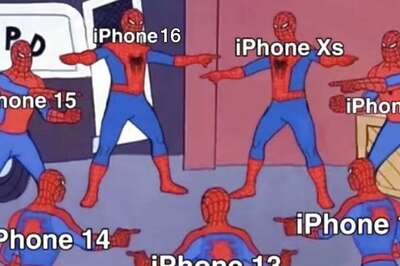
views
For some time now, art house cinema has been bunched together with independent films, parallel cinema and socially relevant stories, often dubbed ‘festival films’. Still, at a time when the business of entertainment is being divided between Bollywood on one side and everything else on the other, Indian art house is standing defiantly against these definitions.
Broadly, one could say that art house films are experimental or financially and emotionally independent films. These films consciously defy the rules of classical mainstream cinema. Filmmaker Q (Garbage) has often adopted an anarchic grammar for his storytelling. Kabir Mehta (Buddha.mov) prefers to let authorship become collaborative and Aditya Vikram Sengupta (Jonaki) believes “art house is the kind of cinema that exercises and indulges in complete freedom of expression without compromise, for the sake of that artistic expression.”
Idealistic? Some may say so. Film critic Chidanand Dasgupta had famously dubbed Indian art house ‘unpopular cinema’. The description makes for a great bumper sticker, but its dismissive generalisation does not account for the work of some of the India’s great art house makers -- Satyajit Ray, Mani Kaul, Ritwik Ghatak and Girish Kasaravalli, to name a few. More recently Kamal Swaroop, Sanal Kumar Sasidharan, Amit Dutta and Q are counted among the flag-bearers of the genre.
Cinema is entertainment and a film means little if it is locked in a vault for no one to see. Rachel Dwyer, professor of Indian Cultures and Cinema at the School of Oriental and African Studies, London agrees. “We all watch films for entertainment, whether easy and lowbrow, charming and middlebrow or challenging and highbrow. No one wants to be bored. The films have to be good, as well as meaningful and artistic.”
Art house or avant-garde filmmakers have faced the same battles with distribution for decades. The scenario has changed, but slightly. In lieu of state supported art house cinemas, paucity of funding and in the face of homogenised content, filmmakers see three viable routes: get absorbed in the film festival circuit – to earn some screening fees; find a digital distribution deal; or release the work digitally, without worry about revenues.
In many western countries, specific cinemas are dedicated to screening art house films. Critic Nandini Ramnath of Scroll.in says, “The absence of art house cinemas – theatres with smaller auditoriums and a staff that carefully curates the new releases and contextualises them against older films -- means we have to rely on film festivals, special curated screenings and streaming platforms instead.”
Films have managed to find their way to interested audiences even when institutional or traditional avenues have been blocked. Q’s Gandu premiered at the 2011 Berlinale and toured more than 60 festivals worldwide. The film was banned in India, yet it reached its audience through illegal downloads. Today, with the escalation in video on demand (VoD) services, and a crackdown on piracy, if producers thought Netflix, Prime Video and other OTT (over the top) services would be saviours of the independent and offbeat genres, they have had a reality check. Though they began by paying top dollar for indies, now even these players have course-corrected.
If producers thought Netflix, Prime Video and other OTT services would be saviours of the independent and offbeat genres, they have had a reality check. Though they began by paying top dollar for indies, now even these players have course-corrected.
VoDs services would rather commission originals – where they own the intellectual property rather than get into a licensing model. Filmmakers rue this downturn in pricing. The expected launch of Mubi (a subscription based service that focusses on international art house cinema) in India is giving auteurs some hope.
Sengupta, whose Labour of Love released in three international markets as well as online says, “Clearly VoD is the place to go for all films. When they started out on acquisitions, these services paid quite a bit. But now the slabs have reduced. Theatrical release is not an option for our kind of films at all, so people are in a fix.”
In an interview to Mint earlier this year, Q said he didn’t see “a very healthy future” for art house. Sanjay Ram, Co-founder of festival agency Basil Content, is equally bleak in his outlook. “I don’t think there is a sustainable art house or independent market in the country because our distribution model does not support it. Also these films are made on a shoestring budget and do not have the additional publicity and advertising budget required for a theatrical window.”
In this scenario, resourceful creators like Sandeep Mohan and Sanal Kumar have developed alternative distribution models such as film clubs, travelling theatres and community screenings which generate enough resources to recoup cost of production. Aabobo is an initiative which describes itself as a “community of indie cinema creatures”. Eligibility for the collective is simply this: a love for “the endless artistic battle that is indie cinema”.
Kabir Mehta’s Buddha.mov, a hybrid of reality and fiction, screened at the Mumbai Film Festival 2018. His second feature, VR Peon, is part of NFDC’s Film Bazaar this year. Undeterred by the pessimism of some, he identifies a new crop of younger filmmakers who “don’t want to cater to industry standards or notions of exotic, social, Hollywood or Bollywood genre films. We are making what we want to make, which is essentially films with strong authorship that don’t conform to something pre-decided.”
If anything, the realism and honesty of the stories and storytelling give art house films their legs. As Sengupta says, “Films are films. Only tastes are subjective. Bollywood films are wish-fulfilling and manipulative. Art house films may not entertain or even enlighten, but they will not corrupt or harm society either and because it is a reflection of society, it stays with us even after 20 years.”




















Comments
0 comment